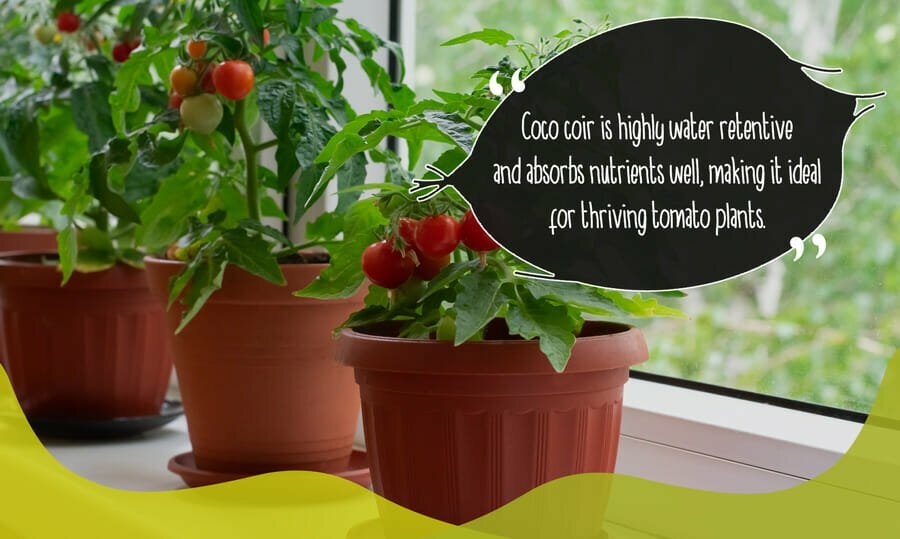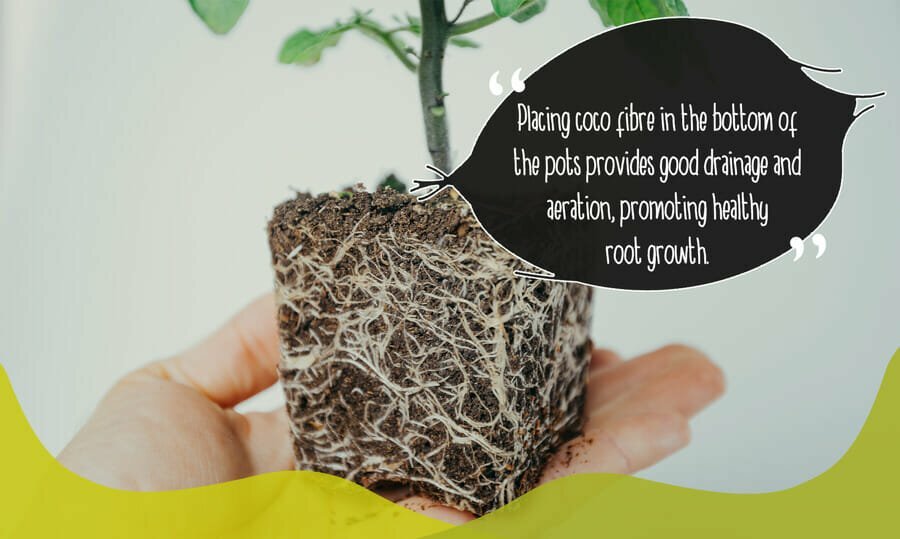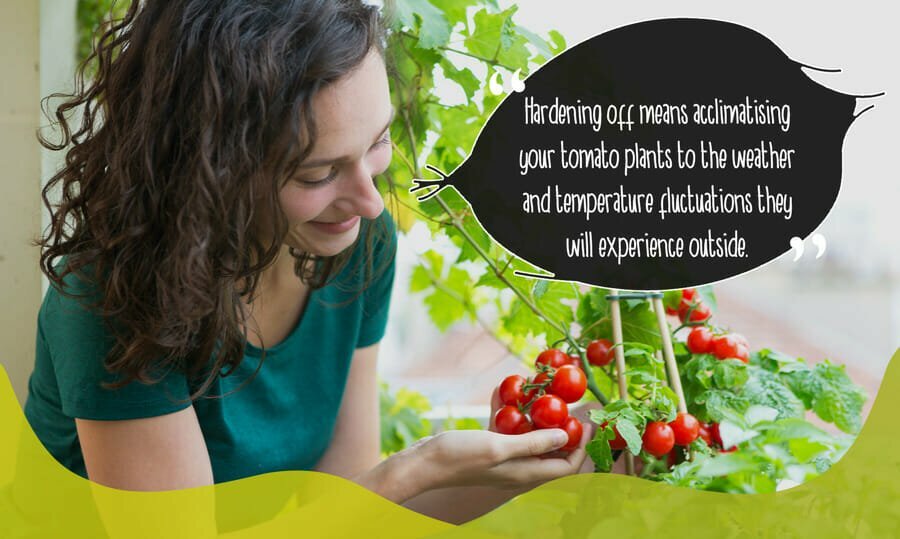How to sow tomato seeds in pots
There are two main types of tomato: compact bush varieties, and larger cordon varieties. The latter grow better in large growing bags, 30cm pots, or in the ground, and will need to be staked for support. Bush varieties don’t need support as they grow much shorter and bushier. They can be grown in pots and hanging baskets easily.
Tomato plants prefer slightly acidic soil, with an ideal pH of 6.0-6.8. They are also thirsty plants, requiring a good amount of water and lots of nourishment. Coco coir falls naturally within this pH range, is highly water retentive and absorbs nutrients well, making it an ideal substrate for thriving tomato plants.

SOWING TOMATO SEEDS FOR HEALTHY GERMINATION
As seedlings grow well at room temperature, around 18–21C, you can give them a good start by growing indoors during the earliest stages.
If your seedlings are growing in a greenhouse, or similar temperature-controlled environment, you can sow as early as late-February to mid-March. If you plan to grow outdoors, sow from the latter half of March to early April.
Sowing tomato seeds in coco peat
Fill your pot or seed tray with coco peat up to a couple of centimetres beneath the rim. Scatter your seeds evenly and then cover with a thin layer of compost – around 3mm – before topping lightly with coco chips. Coco chips retain moisture and help provide insulation for germinating seeds.
A water-retentive soil that drains well, like coco peat, is ideal for tomato plants. Over-watering of seedlings can occur in ordinary soil, which leads to fungal disease or poor germination rates. Using coco coir further protects germinating seeds as it’s naturally sterile, discouraging disease and fungus.
Watering tomato seeds
Tomato seeds need to be kept hydrated. One way to do this is to water from below, placing your pot or tray into a receptacle that has a low level of water in it. This allows the soil to stay hydrated without compacting the top layer onto the seeds and disturbing them as they grow.
If it isn’t possible to water from below, you can use misters or spray bottles to lightly spray the surface soil without causing too much disturbance.
Once you have watered your seeds, cover the pot with cling film or a clear lid and keep it in a warm place until seedlings sprout. When your tomato seedlings appear, put them in a light position that is slightly cooler (15–18C) and turn the pot regularly to keep them from growing towards the light.

TRANSFERRING TOMATO SEEDLINGS TO NEW POTS
Once seedlings have reached between 9-10cm tall and grown two true leaves, it’s time to pot them on. Gently remove your seedlings – roots and soil intact, handling by the leaves and not the stems – and place them individually in 9cm pots. Try to avoid pulling by the stem or leaves as this can damage delicate seedlings.
Placing coco fibre in the bottom of the pots provides good drainage and aeration, promoting healthy root growth.
Using coco coir with re-potted plants
With the seedlings potted, gently fill spaces with coco peat, patting it firm as you go. Have your final compost level so that more of the stem is submerged than before, this allows new roots to sprout higher up the stem. More roots mean more tomatoes.
As coco peat alone is sterile, a nutrient-infused mix is necessary for healthy plant growth. Using this for re-potting provides enough nourishment for a few weeks, after which you should feed with balanced liquid fertiliser as instructed. As coco peat absorbs nutrients better than ordinary soil, you may need to do this less often.
HARDENING OFF YOUNG TOMATO PLANTS
If you intend to grow your tomatoes outside, your young plants will need to go through the process of hardening off. This means acclimatising your tomato plants to the weather and temperature fluctuations they will experience outside, compared to the controlled atmosphere indoors.
In the UK, it’s suggested you do this a week or two before planting – usually early May.
Simply place your plants in a protected position outside for a couple of hours during the day, then increase the time by an hour each day. If a late frost or extreme adverse weather is forecast, bring them indoors as a frost will kill your plants outright.

PLANTING OUT, MAINTAINING, AND HARVESTING TOMATOES GROWN IN COCO COIR
You should end up with healthy, thriving tomato plants ready to be planted out – a larger scale version of potting up. This usually occurs between late May and early June. You can mix coco fibre directly into your garden soil at this stage to further improve drainage and introduce coco peat to improve water retention.
Cordon-type tomato plants will need side shoots (that appear between the main stem and the leaves) removing as they appear. Bush varieties shouldn’t have side shoots removed. Cordon types will also need regular tying to their support as they grow.
If everything goes to plan (and the British weather behaves) you should be harvesting and enjoying the fruits of your labour sometime from July onwards.










